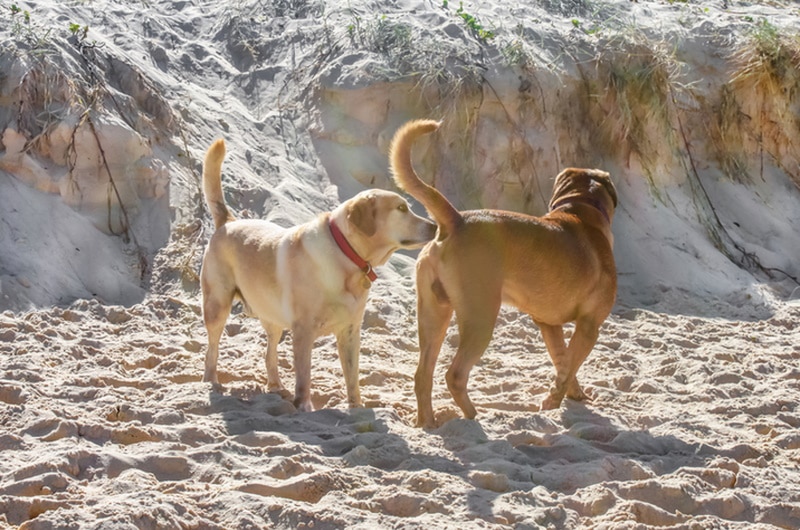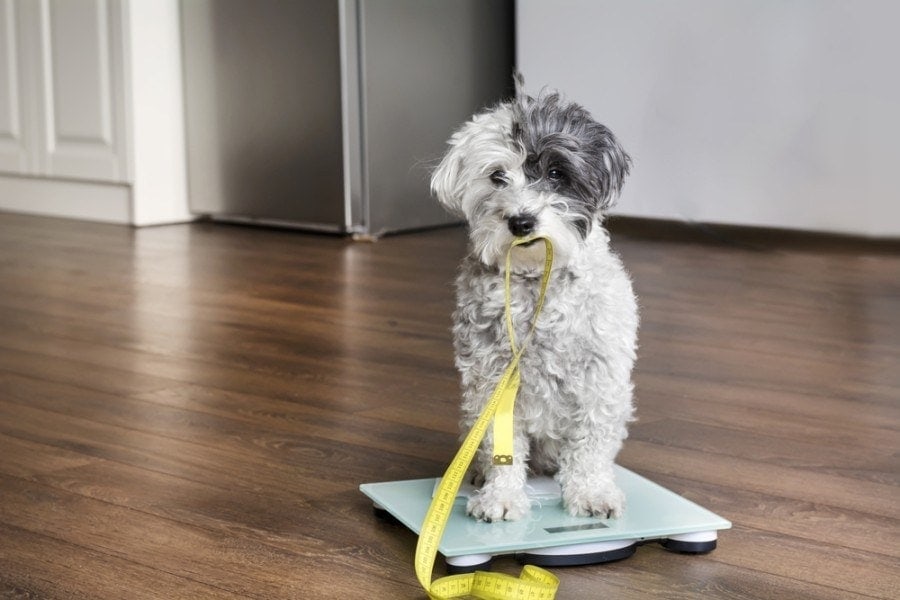How to Train a Bull Terrier: 10 Expert Tips

Updated on
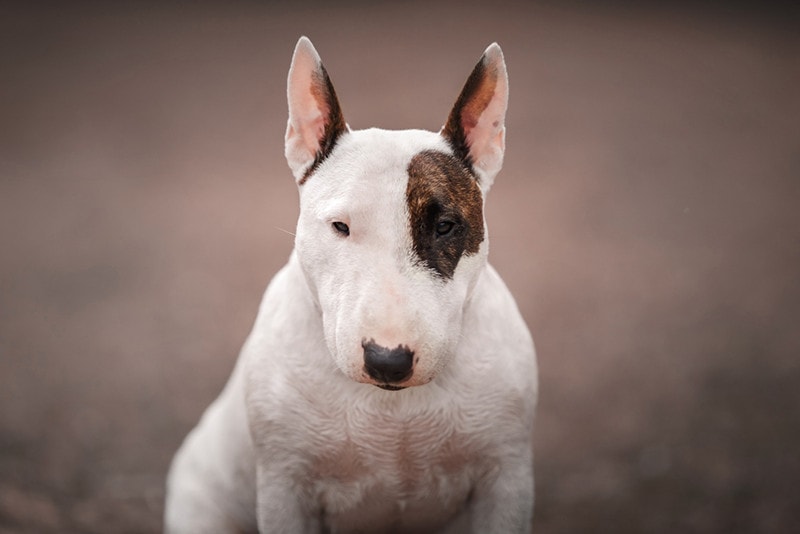
Bull Terriers are playful and loving, but they can also be mischievous and somewhat stubborn. They’re strong, lively, and they can become aggressive if they don’t get appropriate training and socialization when they are young.
Along with regular exercise, you should consider effective training to be one of the most important elements in raising a sociable and well-behaved Bull Terrier. Generally, this breed responds to the same training techniques as other breeds, but its stubbornness and playfulness mean that you will need to be very consistent, and you should use positive reinforcement techniques to help ensure successful training.
Below are 10 tips to help train your Bull Terrier so that it becomes a positive member of the family.
The 10 Tips on How to Train a Bull Terrier
1. Start Young
Training should start as soon as you get your Bull Terrier home, whether it is 2 months or 2 years old. It is easier to train dogs when they are still puppies, and the techniques and commands that you teach at this age will stay with the dog as long as you continue to implement them. What’s more, it also gets the dog used to training sessions so that they will be more likely to behave well and take on your training techniques later.
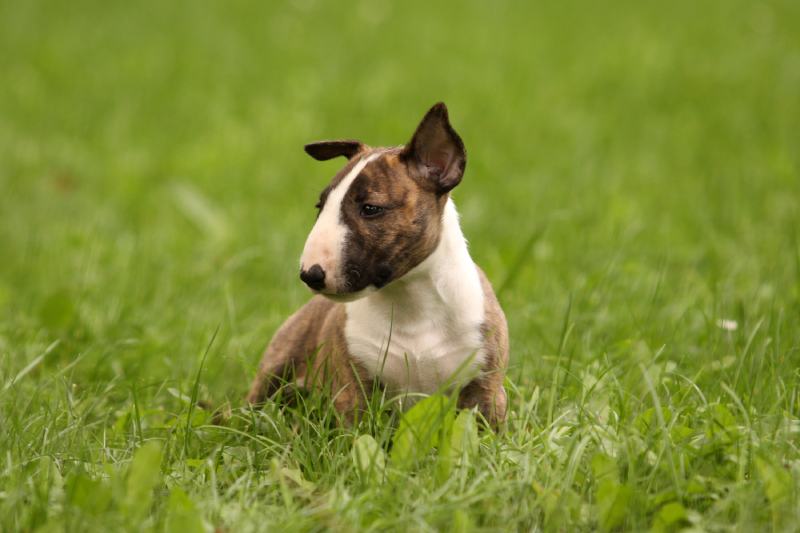
2. Socialize
As well as starting training from a young age, you must start socializing your puppy, too. Socialization means introducing the dog to new situations and to as many groups and types of people and animals as possible. While this might not be training, in the sense that you aren’t training them with specific commands, you are acclimatizing them to everyday situations that they will face throughout their lives. They will learn how to behave, and they will learn that new situations are not to be feared.
3. Set a Schedule for House Training
One of the first things you will want to train into a puppy is house training. There will be accidents initially, and you have to be prepared to mop up wee and pick up poop without getting angry. But the sooner you can house-train your dog, the better it will be for everybody. Set a walking and feeding schedule as soon as possible and stick to it as closely as possible. Generally, you should walk your dog when you get up and just before you go to bed. You should also let them out to do their business shortly after they eat. The more consistent you are with these timings, the more likely your dog will learn when to wee and poop outdoors.
4. Get Them Used to Being Alone
Bull Terriers can suffer separation anxiety if they are left alone for long periods and if they aren’t used to it. While you might want to spend every minute with your new puppy and may be nervous about leaving them alone, you should start getting them used to being alone when they are young. Start by going for a walk around the block while leaving the puppy at home. You can gradually build up to leaving them alone for longer periods.
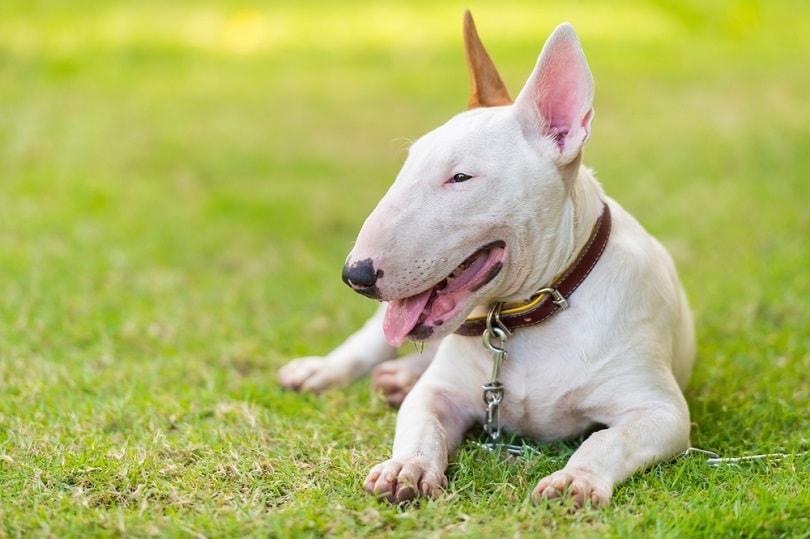
5. Use Positive Reinforcement
Bull Terriers don’t tend to respond well to negative training techniques, but they do respond well to positive reinforcement. This means that you praise and reward them for taking desirable actions and for listening to commands. It also means that you ignore or correct undesirable actions, rather than reprimanding or punishing them.
6. Train Basic Commands
Initially, training sessions will concentrate on recall, which means getting your dog used to its name. You should also start with the most basic but most important command of all, which is “sit”. If you can get your dog to sit on command every time, you can use this to stop them from jumping up and for a host of other purposes.
7. Keep Training Sessions Short
Bull Terriers are playful and mischievous. They can lose concentration quite quickly, especially if the activity they are taking part in doesn’t really interest them. Keep training sessions short, especially when starting out. As a training session goes on, your dog is more likely to lose concentration, which means that you are effectively setting them up to fail. You can increase the training session length as they get older and as they become accustomed to the whole process.
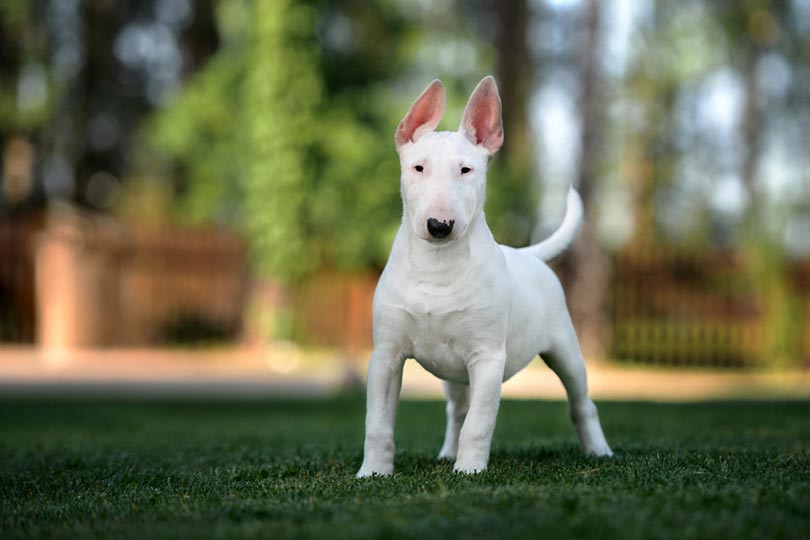
8. Exercise First
Make sure your pooch is exercised before training because they will be less likely to want to play and more likely to listen. They shouldn’t be so worn out that they just want to lay down, but tired enough that they won’t want to charge around the yard. Bull Terriers do need a fair bit of exercise, which can include a couple of moderate to long walks a day, as well as more intense forms of exercise.
9. Don’t Shout or Lose Patience
The Bull Terrier is one breed that doesn’t do well when being reprimanded or scolded. It responds very well to praise and encouragement, so rather than telling your dog off for getting something wrong, you should correct its behavior and then praise and reward it. Don’t shout and don’t be aggressive during training or daily life.
10. Be Consistent
Consistency is key. Bull Terriers aren’t dumb, but it can take a lot of repetitions to understand some of the more complex training commands and desirable actions. Be consistent by using the same commands each time, and by using the same training techniques. If you use different commands and techniques, your dog won’t really know what you want. If you have multiple people in the house, try and make sure you all use the same commands too because it can also lead to confusion if you all say different things.
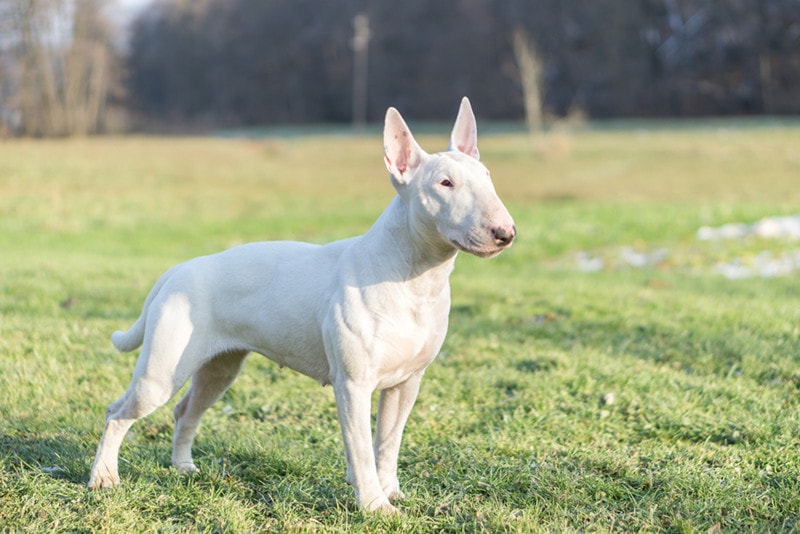
Conclusion
Bull Terriers are playful and energetic. They are also loving and make great family pets, but they do need early socializing and consistent training to ensure that they become sensible and well-rounded members of the family. Start when they are young, set schedules, and be consistent with your positive reinforcement training and, in time, you will have a Bull Terrier that knows how to behave and listens to your commands.
Featured Image Credit: dezy, Shutterstock


